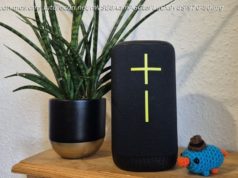Samsung’s latest Ultra tablet packs a massive display with all the Android prowess, but how does it stack up against Apple’s best?
When evaluating tablets, it’s difficult not to compare new entries to Apple’s iPad Pro. The device is the embodiment of mobile computing, and through five generations of refinement, Apple has crafted a product that has earned a spot on our best tablet rankings. But competition is fierce, and Samsung’s newly-announced Galaxy Tab S8 Ultra carries a spec sheet and several productivity features that may just be enough to take a bite out of Apple. Whether you’re a graphics designer, content creator, or mobile gamer, two of your best options for large-screen tablets are Samsung’s latest and Apple’s greatest. While this comparison analyzes the key differences between the Galaxy Tab S8 Ultra and iPad Pro (12.9-inch), including display performance, camera quality, and other standout features, it will ultimately serve as a guide to help you make the best buying decision. Let’s begin. Starting with the displays, the biggest difference is in screen size. The Samsung Galaxy Tab S8 Ultra measures in at 14.6-inches diagonal, versus the smaller 12.9-inch of the iPad Pro. Both tablets are huge, but the extra real estate on the Galaxy will come in handy if you’re a graphics designer or artist who can use a bigger canvas. It also helps that a stylus comes included with the Tab S8 Ultra. Still, mobile gamers who want a wider field-of-view will find both displays to be quite immersive. Another factor to weigh in is aspect ratio. It’s not often talked about but the aspect ratio of the Apple iPad Pro (10:7) is actually more squared than it is rectangular, unlike the wider Samsung tablet (16:10). Depending on your use cases, this can be good or bad. With a more squared form factor, the iPad Pro is easier to hold (one- or two-handed) and less finger stretching is required to reach the corners of the screen. The drawback is that cinematic movies and videos that follow a 2.35:1 aspect ratio, or anamorphic scope, will leave thick black bars at the top and bottom of the screen. Both tablets come with 120Hz refresh rates for ultra smooth animations and the resolutions are as good as they come. Technically, the Tab S8 Ultra’s Super AMOLED offers a higher resolution than the iPad Pro’s Liquid Retina XDR, but the difference in pixels is so miniscule that you’ll have an enjoyable viewing experience no matter which of the two you pick. While Samsung didn’t disclose the nits of brightness that the Tab S8 Ultra holds, our testing of the iPad Pro has shown that its peak of 1,600 nits bolds well for outdoor viewing. While ZDNet’s review of the Tab S8 Ultra is in progress, enough can be gathered from the spec sheet and our experience with the iPad Pro to advise you of what to look out for. Like choosing between iPhone and Android, you’ll face a similar crossroad with these two tablets. The iPad Pro runs on iPadOS which, in the simplest terms, is a large scale version of iOS. You still have a dock at the bottom of the home screen which houses your choice of applications, as well as the ones you most frequently use. Apple has also added some notable features to iPadOS for enhanced multitasking, like Split View and Center window, with more to come via software updates. Most importantly, the iPad Pro is powered by Apple’s latest M1 silicon, which has proven to be a top-tier and efficient chipset, capable of pushing its 8 or 16GB of RAM to handle the most power-hungry programs. The Tab S8 Ultra follows closely with a Qualcomm Snapdragon 8 Gen 1 processor and lives on Samsung’s vision of Android: OneUI Tab 4.






![Bartłomiej Sienkiewicz w "Graffiti" [OGLĄDAJ]](http://nhub.news/wp-content/uploads/2024/06/thumbcf7f4a607db3922a512eb9e3bad01f7f-100x75.jpeg)